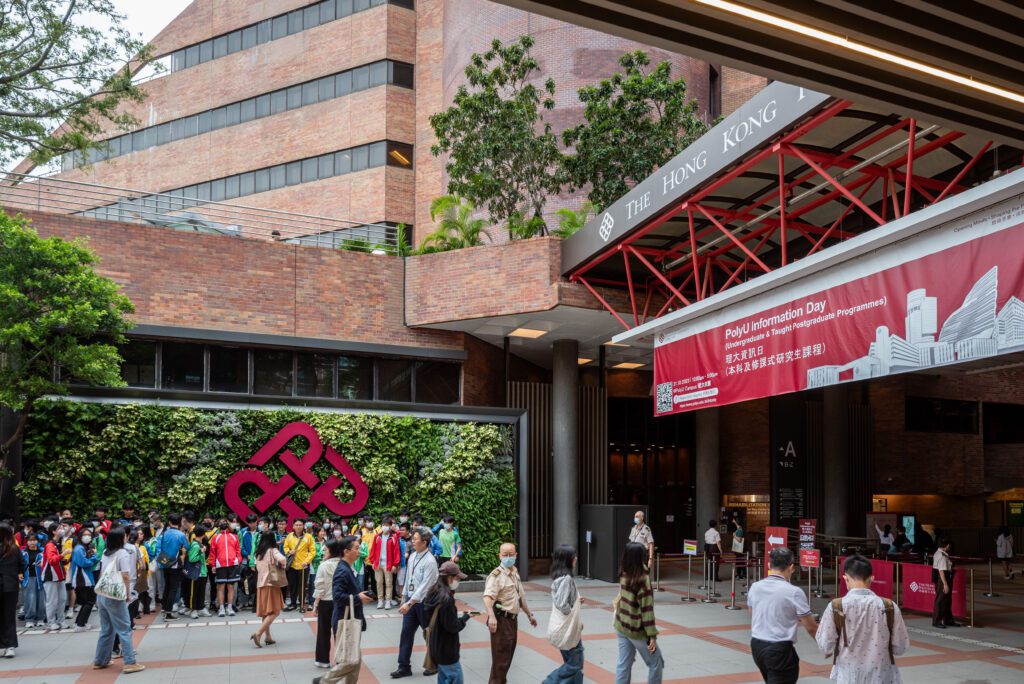AI has made its way into many industries, from healthcare to finance. Most recently, it’s revolutionising physics. Scientists Geoffrey Hinton and John Hopfield received the Nobel Prize in Physics for their work on artificial neural networks. It combines ideas from physics, like thermodynamics and statistical mechanics, to improve how machines recognise patterns and analyse data. This mix of disciplines is helping scientists find new ways to explore problems in various scientific fields and shows how AI can help us better understand complex systems.
Want to be part of that future? The Department of Applied Physics at The Hong Kong Polytechnic University is where you start.

The department regularly updates its curriculum to ensure students gain the latest knowledge and adapt to an ever-changing society. Source: The Hong Kong Polytechnic University
The power of two
For some, the two may seem like an unlikely pair. But they are closely intertwined. “AI and physics mutually help each other for development,” says Associate Head & Professor Dennis C.W. Leung. “AI can help physics research by performing large-scale calculations and predictions which can save resources and time for experiments.”
Professor Yuen Hong Tsang gives an example of this synergy. “By learning from high-fidelity simulation or experimental datasets, machine learning models can predict key optical and electronic properties, such as band structures, exciton dynamics, or conductivity,” he says. “It can also work backwards, helping us identify atomic arrangements or doping profiles that yield targeted behaviours. This speeds up the discovery of novel 2D heterostructures with tailored functionalities, bridging the gap between theory and experiment.”
The relationship, however, is not one-sided. Just as AI helps physics research, physics plays a key role in making AI work better. “Photonic computing enables ultra-fast, low-latency data processing using light instead of electrons, which is critical for scaling AI workloads,” says Professor Tsang.
“Meanwhile, nanomaterials like graphene and transition metal dichalcogenides offer exceptional electronic, thermal, and optical properties, facilitating the development of neuromorphic devices, memristors, and high-speed transistors.”
Thanks to these innovations, future AI hardware will be smarter, faster, and ready to perform in real time. If you are eager to explore this exciting intersection, a BSc (Hons) in Physics with a Secondary Major in Artificial Intelligence & Data Analytics (AIDA) or Innovation and Entrepreneurship (IE) can help.

PolyU and Cheng Yu Tung College (CYTC) launched “Start-up Weekday” to help students learn about entrepreneurship and explore new ways to connect with industry and research. Source: The Hong Kong Polytechnic University
Reimagine what you can do with AI
As part of this cross-disciplinary degree, you can take a secondary major in Artificial Intelligence (36 credits), where you’ll learn important skills in mathematics, machine learning, artificial intelligence, and computer algorithms. You’ll put your skills into practice through a capstone project, backed by cutting-edge labs, including one newly established lab sponsored by Huawei.
It’s the kind of environment that drew Professor Tsang to PolyU. “I was interested in the department’s world-class research facilities in novel materials fabrication and characterisation,” he explains. Since then, his research group has expanded their focus. “We are no longer limited to laser photonics devices; we use these novel materials for renewable energy, solar cells, battery devices, catalysis, and more, through collaboration with experts from around the world,” he says.
Guided by expert faculty like him, you gain technical expertise and develop industry-relevant skills, including lateral thinking, communication, creativity, critical thinking, and problem-solving through AI-related education projects. One standout is Borderless Lab365, a project funded by the Quality Education Fund.
“This platform lets students conduct real physics experiments from a distance while the system intelligently collects and processes data in real time,” says Professor Tsang. The department is also building an AI-integrated question bank that adjusts to your progress, giving you personalised problems that fill your learning gaps and help you improve faster. On top of that, you’ll find opportunities to explore the development of emerging devices for AI applications, the integration of physics into AI frameworks, and the use of machine learning for functional material prediction.
And when it comes to real-world experience, you’re covered. The department collaborates with industry partners and renowned universities to provide excellent internship and exchange opportunities. Partners include MTech Engineering, which applies BIM and lean construction solutions in the building sector; Suga International Holdings Limited, an electronics solution provider; and Dreams AI, a company that develops customised AI automation software.
With this level of academic, research, and industry support, you’ll be ready to take on exciting roles in innovation, healthcare, or tech, or continue your journey in academia.
Follow the Department of Applied Physics on Facebook, YouTube, Instagram, and LinkedIn

